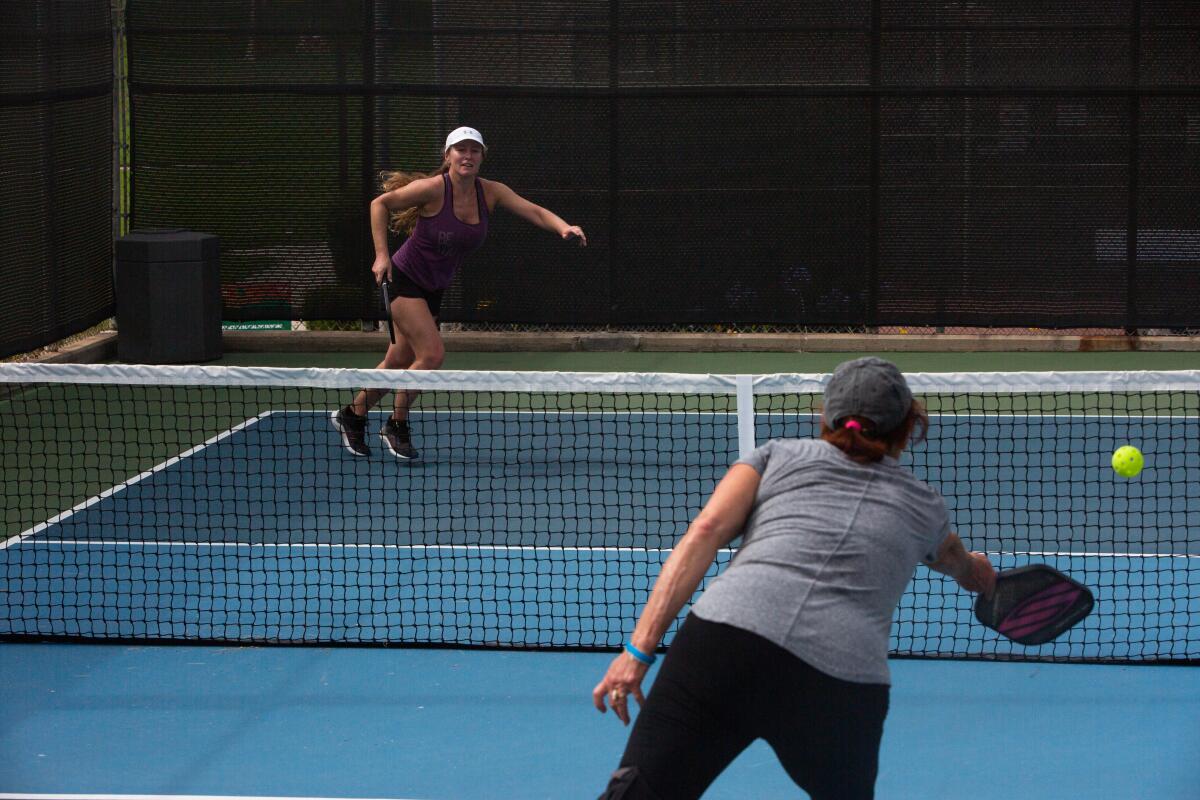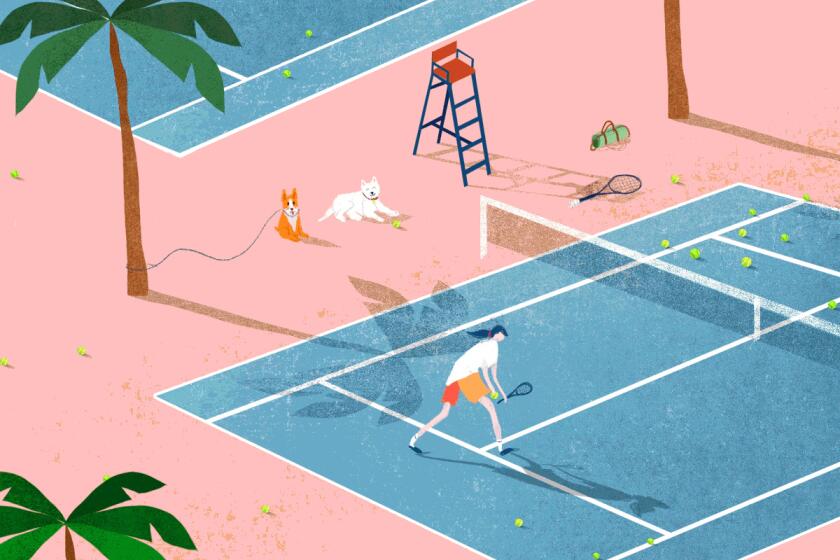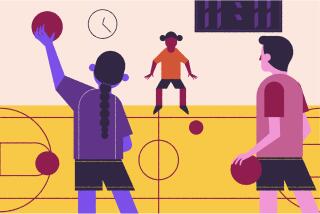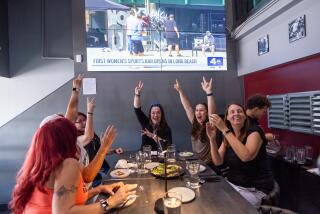Caught in a pickle? The ‘Airbnb of pickleball’ can help L.A. players find a court

The biggest challenge for pickleball fans in Los Angeles is often step No. 1: finding a court to play on.
Since the pandemic, when the paddle sport exploded in popularity, city officials have been grappling with ways to meet the demand for more spaces. But change has been slow — factors ranging from neighborhood drama to a lack of funding to pushback from tennis players worried about their own turf have hampered efforts to expand the number of courts across Southern California.
But things are finally starting to take a turn — or a backspin, as a pickler might say. One inventive solution comes from L.A.-based Swimply, the Airbnb-like platform for homeowners to rent out their pools by the hour. The company recently added pickleball courts to its roster. Players now can scroll through the website or app and find about 20 private pickleball courts available to rent in L.A. County and 300 nationwide, with those numbers increasing rapidly, according to a Swimply rep.
Swimming pools are now part of the sharing economy. Rent out a homeowner’s spot for a party or just use it as a place to cool off.
Court rentals start at $25 an hour, with an average hourly rate of $40 (along with a 10% service fee for parties of up to 14 players). Court hosts set the rate, list amenities and establish court rules. Yes, the price is heftier than what you’d pay at your local rec center, but it may be a good option if you’re looking to play doubles with friends for an hour at a unique locale. You can rent a private court in Bel-Air that includes a fire pit and mini-fridge, a Studio City court surrounded by greenery or a court in Encino that allows up to 100 guests.
Swimply founder and Chief Executive Bunim Laskin said the company’s mission is to take spaces that are typically exclusive to the wealthiest and help make them accessible to everyone. Adding courts was “a no-brainer,” he added.
“With pools, we are taking a luxury that is owned by few, desired by many, and essentially democratizing that,” he said. “It was the perfect step for us to apply our Swimply magic to pickleball as well.”
The company also rents tennis courts and is exploring expansion into arenas such as private music studios and backyards for events.
The explosion of pickleball, which combines elements of badminton, tennis and ping pong, has been seen across the U.S. According to a 2023 report from the Sports & Fitness Industry Assn., pickleball participation nearly doubled in 2022 and has increased by 158.6% since 2021. Laskin notes that you don’t need to be an athlete to enjoy yourself. Less physically strenuous than tennis, the sport has been a godsend for some older players.
“Pickleball is more about the moments you create rather than the sport itself,” he said.
On a hunt for friendship, an Angeleno is visiting every tennis court in L.A. Here are his favorites so far (and the people he’s met along the way).
Nancy Mancini, a pickleball coach and the director of pickleball at Swimply, uses the platform to book courts for her clients — some of whom are celebrities and feel more comfortable using private home courts rather than public ones. She said she has seen pickleball’s power to unite people, especially after the pandemic.
“I call pickleball my silent angel,” she said. “It kind of brings out our inner child.”
Along with the Swimply program, other new pickleball ventures are cropping up around Southern California. The Santa Monica Pickleball Center invested more than $250,000 in a new pickleball center, which features four new outdoor lighted courts and a massive retail space where players can pick up everything from paddles to grips. In San Diego, Westfield UTC shopping center is luring in players by converting a space on the property into three regulation-sized outdoor courts.
More to Read
Sign up for The Wild
We’ll help you find the best places to hike, bike and run, as well as the perfect silent spots for meditation and yoga.
You may occasionally receive promotional content from the Los Angeles Times.








